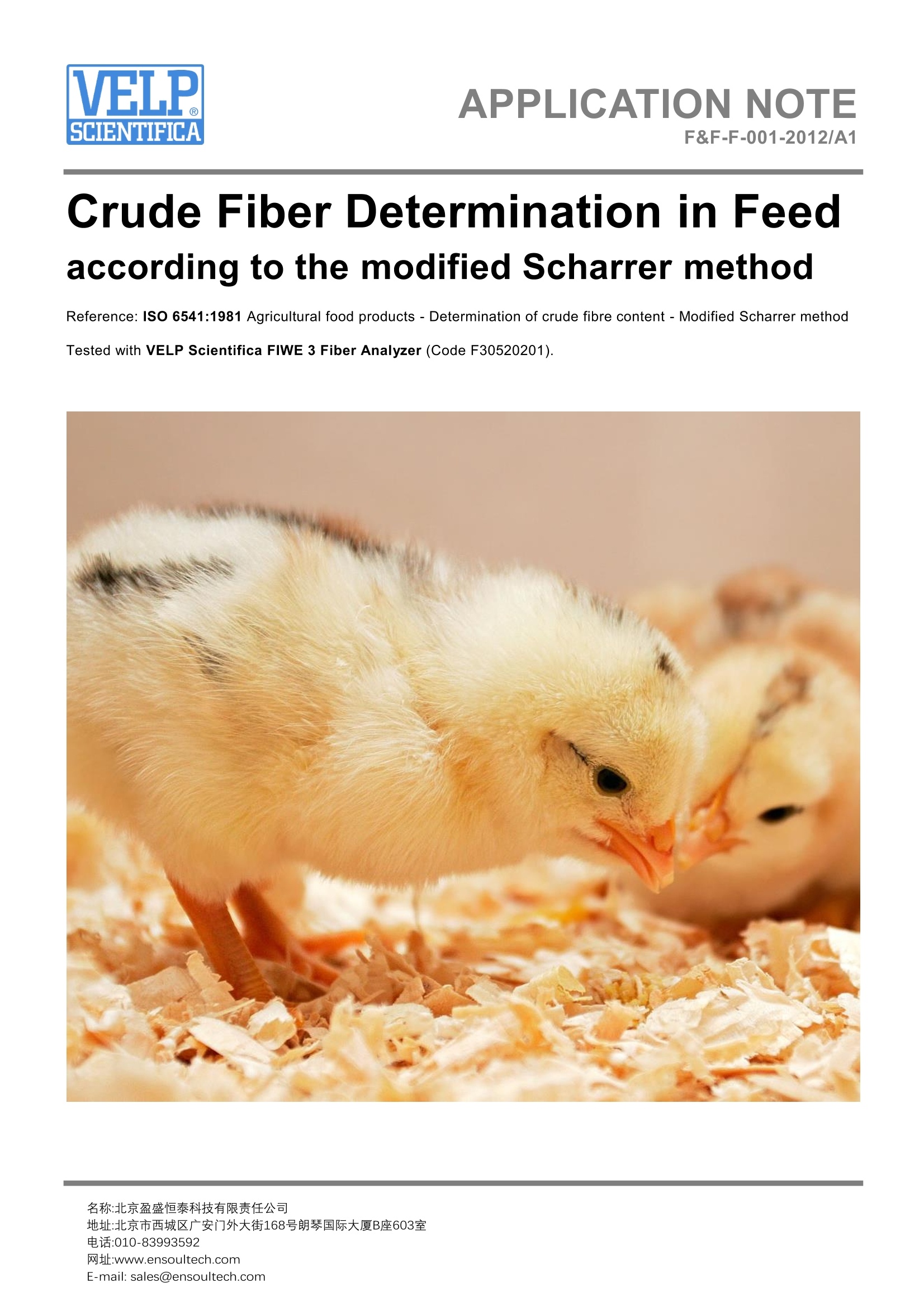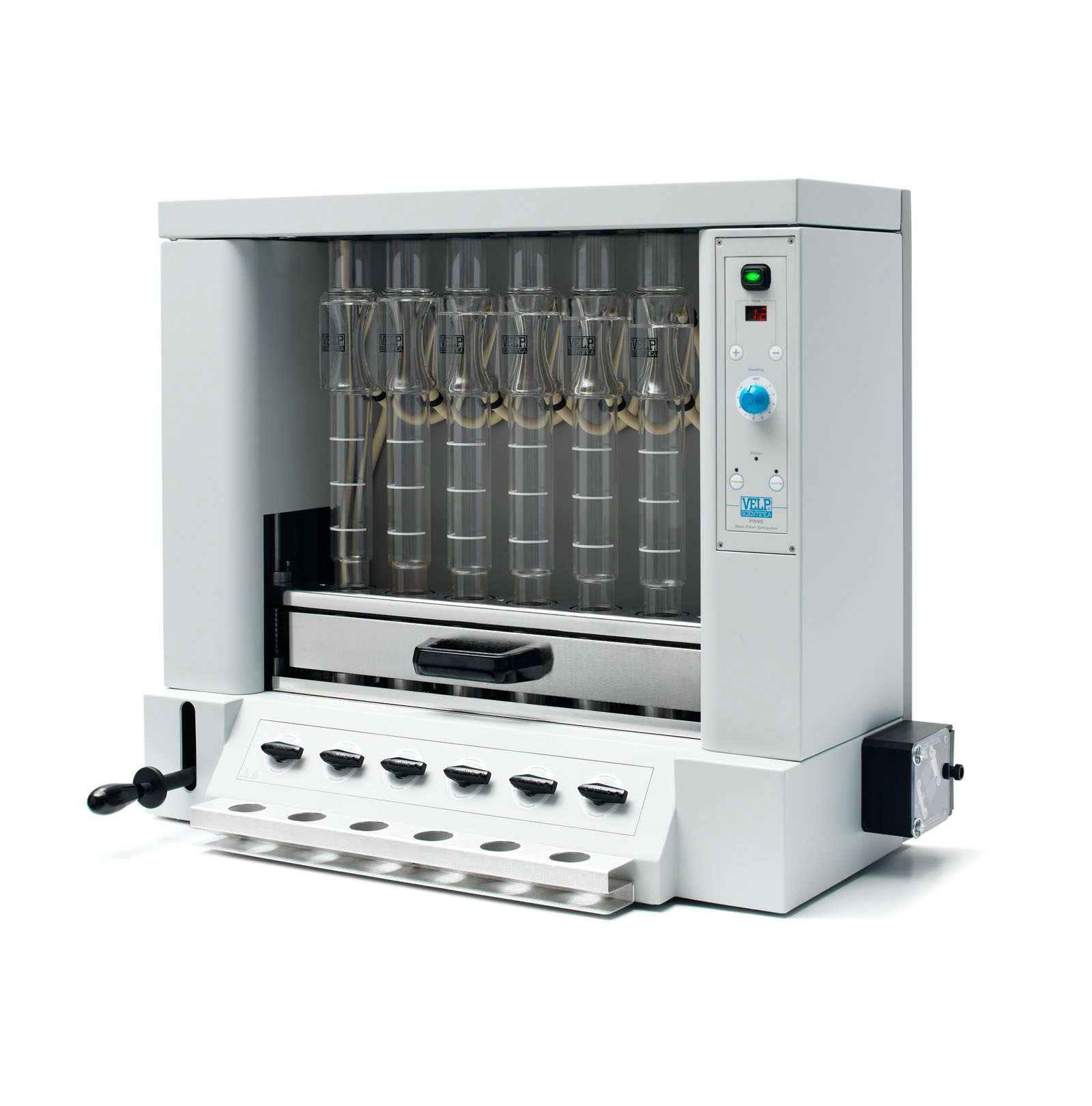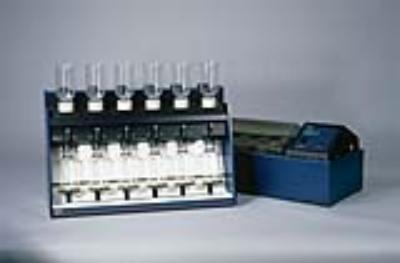方案详情文
智能文字提取功能测试中
APPLICATION NOTEF&F-F-001-2012/A1 CRUDE FIBER DETERMINATION IN FEEDSCHARRER REAGENT METHOD Crude Fiber Determination in Feedaccording to the modified Scharrer method Reference: ISO 6541:1981 Agricultural food products - Determination of crude fibre content - Modified Scharrer methodTested with VELP Scientifica FIWE 3 Fiber Analyzer (Code F30520201). Introduction Fiber is the part of fruits and vegetables (lignin, cellulose, hemicellulose, pectin) that cannot be digested and assimilatedby the human gastrointestinal tract. However, fiber analysis is important for: nutritional purpose, as a certain amount of fiber is necessary for good functioning of the digestive tract; economic reason, as manufacturers of food and animal feeds use as much fiber as a raw material as they areallowed since it is a low-cost component. legal aspects, as law authorities of almost all Countries require food and feed manufacturers to declare the fibercontent on the packaging as part of nutritional labelling. Chemically, fiber is defined as indigestible residue, after boiling with diluted solutions of strong mineral alkalies andacids. Fiber Determination in soy feed according to the modified Scharrer method The Fiber Determination using Scharrer reagent consists in boiling the sample with a mixture of acetic acid, nitric acidand trichloroacetic acid, followed by the separation and washing of the insoluble residue on a filter crucible. Drying andweighing of the insoluble residue and the determination of the loss of mass after 3 hours in the muffle at 550 °C. Reagents 1-Scharrer reagent consisting of a mixture having the following composition: -Acetic acid solution prepared by diluting 365 ml of 96% glacial acetic acid with distilled water to 500 ml Used 450 ml of this solution - Concentrated nitric acid: 30 ml -Trichloroacetic acid, crystalline: 12 g 2-Celite coarse 545 3-Acetone 4-Diethyl ether Analysis Procedure The diagram below shows the steps involved in the procedure: Grind the sample using a grinder (particle size 1mm). Weigh into the crucible accurately 1 g of celite and 3 g of homogeneus grinded sample (W1) with an accuracy of ±1 mgand position the crucible (P2 type - Code A00001140) into the FIWE unit. The sample must to be homogeneous. Add 60 ml of cold Scharrer reagent and boil 30 minutes exactly from the onset of boiling. Connect to vacuum for draining the acid. ( E-mail: sales@ensoultech.com ) Wash with ~ 400 ml of deionised water, using the water spray device and, if necessary, use air in order to separate thecompact content of crucible from the bottom and to crumble it. VELP Water Spray device ensures a homogeneous distribution of water along the glass walls and enables a completecleaning of glass condensers, in this way every possible trace of the digested sample is completely removed. Wash three times with 25 ml of acetone and two times with 25 ml of diethyl ether. After draining the last wash, removethe crucibles and determine the dry weight after drying in an oven at 130°C for 90 minutes. Let cool the crucibles in a desiccator up to constant weight. This weight represents the crucible containing crude fiberand ashes (W2). Place the crucibles in a muffle at 550 °C, starting from room temperature, for three hours and reweigh after cooling in adesiccator. This weight represents the crucible containing ashes (W3) Calculation W1 = sample weight (1g) W2 = crucible weight with fiber and ashes, after drying in an oven at 130 °C for 90 minutes W3= crucible weight with ashes, after muffle at 550 °C for three hours Typical Results on Soy Feed (repeated twice) W1 (g) W2 (g) W3 (g) Fiber% 2.999 31.778 31.411 12.24 3.006 31.208 30.840 12.24 3.007 31.380 31.015 12.14 3.016 31.524 31.154 12.27 3.017 31.239 30.870 12.23 2.996 32.063 31.691 12.42 Average ± SD% 12.26±0.09 RSD%* 0.7 Fiber Labeled Value: 12% * RSD%=(Standard Deviation * 100)/ Average Conclusion The obtained results are reliable and in accordance with the labeled value. The use of an extraction apparatus purposely devised for this method as FIWE unit makes very easy the standardizationof analytical conditions. The FIWE Series is suitable for raw fiber determination and it is ideal for Scharrer method. Benefits of FIWE are: 3 or 6 positions simultaneously: FIWE units can support up to 3 (FIWE 3) or 6 (FIWE 6) crucibles.Samples can also be processed individually . Time saving: fast analysis (2 hours with FIWE vs. 6 hours manually) Easy to use: convenient filtration, with pump and air pressure Precision and accuracy: high reproducibility of the results: ±1% relative or better In order to avoid losses of fiber, it’s important to remember that crucibles life is around 20-30 analyses, because thefritted filter could be damaged from basic and acid solutions. Hence it’s suggested to change them after 20-30 analyses. ( 名称:北京盈盛恒泰科技有限责任公司 ) ( 电话:010-83993592 ) ( 网址:www.ensoultech.com ) ( E-mail: sales@ensoultech.com ) 名称:北京盈盛恒泰科技有限责任公司地址:北京市西城区广安门外大街朗琴国际大厦B座电话:址:www.ensoultech.comE-mail: sales@ensoultech.com 名称:北京盈盛恒泰科技有限责任公司地址:北京市西城区广安门外大街朗琴国际大厦B座电话:址:www.ensoultech.com 纤维是水果和蔬菜(木质素、纤维素、半纤维素、果胶)中不能被人体胃肠道消化和吸收的部分。然而,纤维分析对于以下方面很重要:营养目的,因为一定数量的纤维对于消化道的良好功能是必要的;经济原因,食品和动物饲料制造商使用的纤维原料是允许的,因为它是一个低成本的成分。法律方面,几乎所有国家的都要求食品和饲料制造商在包装上声明纤维含量,作为营养标签的一部分。化学上,纤维被定义为用浓矿碱和酸稀释溶液煮沸后的不可消化的残渣。 检测样品:大豆饲料检测指标:纤维含量检测仪器:FIWE3纤维素测定仪(意大VELP)检测结果:所得结果可靠,与标值相符。使用为本方法设计的提取装置作为FIWE单元使分析条件的标准化变得非常容易。FIWE系列适用于原纤维的测定,是Scharrer法的理想选择。FIWE优势特点: ►同时3或6个位置:FIWE单位可以支持最多3个(FIWE 3)或6个(FIWE 6)坩锅。样品也可以单独处理;►节省时间:快速分析(FIWE 2小时,手动6小时);►使用方便:过滤方便,与泵和空气压力;►精度和准确性:结果的重现性高:相对1%或更好。
关闭-
1/3

-
2/3

还剩1页未读,是否继续阅读?
继续免费阅读全文产品配置单
北京盈盛恒泰科技有限责任公司为您提供《大豆饲料中纤维含量检测方案(纤维测定仪)》,该方案主要用于饲料中理化分析检测,参考标准《暂无》,《大豆饲料中纤维含量检测方案(纤维测定仪)》用到的仪器有意大利VELP公司-纤维素测定仪。
我要纠错
推荐专场
纤维测定仪、纤维素测定仪、纤维分析仪
更多相关方案






 咨询
咨询
